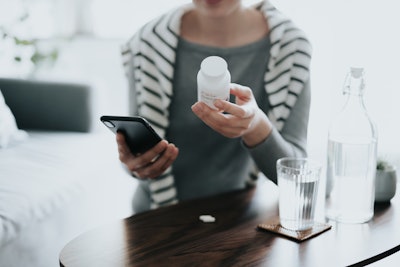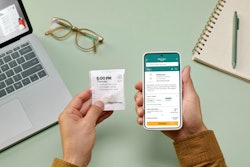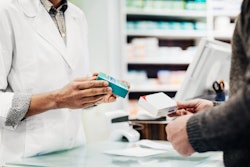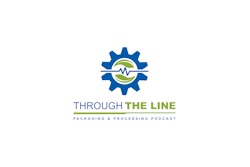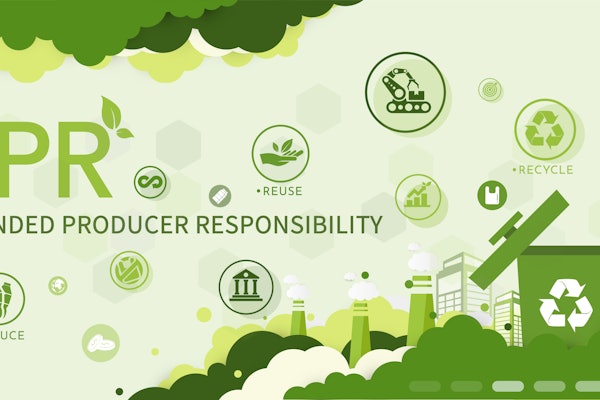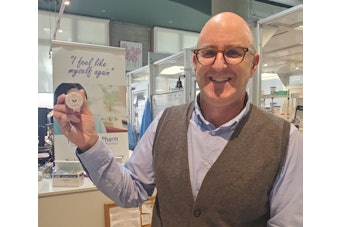Key Takeaways:
· Smart packaging solutions are now directed at improving patient care, ensuring safety, and providing necessary information for the patient to take the drug correctly.
· NFC-enabled smart labels allow patients to access information about their medication, or even autoinjector, using their phones.
· The goal is to use a single digital ID for multiple purposes like monitoring temperature and product conditions throughout the supply chain, as well as enabling the patient to verify important information such as expiration date.
Identiv is a technology company that helps pharmaceutical and medical device brands create packaging that’s smarter and more secure. By embedding small chips or sensors into medication packaging or medical devices, for example, companies can track where a product has been, confirm its authenticity, and make sure it’s been stored properly.
To hear more about the evolving role of smart packaging in healthcare, I talk with Kristen Newquist, CEO of Identiv, about the new focus on patient-centric solutions and what the future holds for smart packaging.
HCP: What do you believe is driving the shift toward more patient-centric smart packaging?
Newquist: On the backend, smart packaging has long been used for cold chain monitoring and anti-counterfeit measures, which remain significant. However, we are seeing that some of the smart packaging solutions are now directed at improving patient care, ensuring safety, and providing necessary information for the patient to take the drug or use the medical device correctly. And it's not that it's going away from those backend things, but we definitely are seeing the solutions moving toward the patient experience, and really with the primary goal ultimately of ensuring patient safety and ensuring the best patient outcome that there can be.
HCP: In your opinion, what factors are influencing this transformation in packaging?
Newquist: Several factors contribute to this trend. There's a movement of patient care from hospitals to homes, driven by cost reduction and patient preference. But then of course when a patient is recovering at home, they likely need more care than potentially the family members can provide. Smart packaging or connected products can provide that additional care and information.
Then, increased comfort with technology, accelerated by COVID-19, has made telehealth more common. These trends, combined with technological advancements, are driving the shift.
HCP: Can you give an example of how this technology improves patient confidence and provides real-time support during treatment?
Newquist: We're seeing kind of this growth in the pharmaceutical industry with these large molecule drugs that typically must be administered in some type of intravenous way. And I do think that these are really powerful drugs, but they're definitely more difficult to administer than taking a pill, right? For complex drugs like these, smart labels provide immediate access to instructions and support. Patients can view instructional videos or contact healthcare professionals directly, increasing confidence and comfort with home treatments.
HCP: How are NFC-enabled smart labels being used to support medication adherence?
Newquist: NFC-enabled smart labels allow patients to access information about their medication, or even autoinjector, using their phones. They provide details on side effects, recalls, proper dosage (usage), and more. These labels can also offer reminders and direct access to care providers, ensuring patients have the support they need. We've certainly seen instructions for use, which typically when you get a new prescription, you get your thick set of IFUs (instructions for use) that come with a product. The first thing you do is throw it away. And then of course if you do have trouble with the medication, some side effects, you're like, ‘where did that thing that I threw away go?’ So now with an NFC label, you can immediately tap it, and you can get access to anything.
HCP: There must be a sustainability side to it, correct?
Newquist: There's definitely a sustainability piece there. Now, I think it'll take a little while before the regulators will let the IFU be replaced completely. But I think that down the road, yes, it could definitely be replaced, and it certainly gives you an easy way to access it at any point, but you'd really have to make sure that everyone has access to a cell phone and can get the instructions that way.
HCP: So, if patients don’t have a smartphone, that is definitely a challenge. What other challenges do patients face with this technology?
Newquist: A key challenge is ensuring all patients can use and understand the technology. While tech-savviness is increasing, there will always be those who need traditional methods. Ensuring access to information for all patients, regardless of their tech skills, is crucial.
HCP: What about the challenges that pharmaceutical and med tech companies may face in adopting this technology?
Newquist: Regulatory and privacy issues are significant hurdles. As new technology comes to fruition and the ability to deliver things like IFUs electronically... These are new areas that the FDA doesn't necessarily have all mapped out yet. The FDA and other bodies need to establish protocols for new technologies, ensuring patient data privacy and compliance with regulations.
HCP: What’s next for smart packaging—beyond dosage reminders and product verification?
Newquist: We're exploring additional functionalities like fill level management and environmental monitoring. These advancements could ensure proper dosage and storage conditions, benefiting both patients and manufacturers by providing comprehensive data throughout the supply chain and at the patient level.
HCP: What kind of companies do you work with and what’s the process to adopt these technologies?
Newquist: So, we work both with the drug and the medical devices that have drug delivery devices like those that would manufacture auto-injectors. Because it could be a compelling advantage to have some smart technology incorporated into their products that differentiates them from their other medical device manufacturers. So, we are working with the medical device manufacturers, but also the pharmaceutical companies are directly interested in looking and exploring this as well.
HCP: So, is this in the early stages of adoption, would you say?
Newquist: Yeah, it’s in the very early stages of adoption. There's been a lot of work and a lot of solutions that exist on the backend as we discussed, but even those are still in early phases of broad-based adoption.
We see the pharmaceutical companies really exploring these different ways to deliver information care, and they all have their digital transformation strategies. They know they need to stay on the cutting edge of it. They know it could actually really differentiate them. So, there's a lot of interest, but it is in the very, very early stages.
HCP: At what stage do you need to be involved?
Newquist: Med device companies can add it to their device at any given time, but then of course, they must go back and get the regulatory approvals for any changes that they're making to that device. So, it can be done; it doesn't have to be done when that medical device is first developed, it can be a next generation product. And on their pharmaceutical side, if a pharmaceutical company has one drug that they want to offer smart labeling on, of course the regulatory must be updated so that they can provide some of this information in a digital format, in addition to the traditional formats.
HCP: In your opinion, what's next for smart packaging beyond dosage reminders or product verification?
Newquist: We’re currently conducting some R&D focused on fill-level management. The goal is to ensure that each syringe contains the correct dosage and can confirm whether the full dose has been administered. We’re working on integrating machine-based fill-level sensing to support this.
In addition, we're exploring the integration of various sensors into the packaging—not just for identification and verification, but also for environmental monitoring. For example, these sensors could track the temperature of a drug throughout the supply chain and even at the patient level. This is especially important for newer therapies that require strict temperature and humidity controls.
HCP: It sounds like the smart packaging technology could be beneficial to both the patient and the manufacturer of the product, right?
Newquist: Ideally, when you embed an RFID inlay and intelligence into a product, the vision is that it can be leveraged throughout the entire product lifecycle—from supply chain management all the way to patient engagement. In some cases, a dual-frequency RFID tag may be necessary, but the ultimate goal is to use a single digital ID for multiple purposes. This includes monitoring temperature and product conditions throughout the supply chain and at the patient level, as well as enabling the patient to verify important information such as whether the drug is recalled or expired.
The same digital ID that helps ensure patient safety and supports adherence—like reminders and confirmations—can also streamline logistics and ensure product integrity from manufacturing to final use. It's about creating one intelligent system that benefits both the supply chain and the patient experience.
